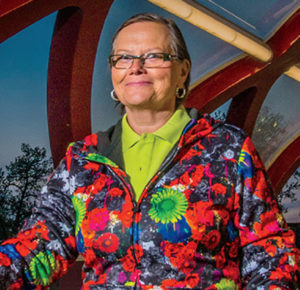
When asked, patient and family advisors, along with staff and health-care providers, offer powerful aspirations for the future of cancer care. When building a new cancer centre, they can easily describe the desired future state. It is my belief that the vision for the future is best defined through engagement, meaning: let’s ask our people and those we serve!
Engagement on a large, complex project like a new cancer centre is always evolving and complicated. In Calgary, the focus for our project team building the new cancer centre at this early stage is on planning and design, but my mind is already jumping to the future. I want to talk about people and how we will deliver care at the new centre and, rightly so, our patient and family partners always provide feedback on the design and delivery of care at the same time. Our conversations always end up straddling things that we can address now and things that will have to wait for quite a few years before considering. The feedback we receive is always comprehensive because asking our patient and family partners to discuss portions of their health-care experience in isolation would be difficult.
My job is to focus the conversation and help the patient and family advisors know the difference between feedback about design versus operations. I have to be honest – I am continually trying to figure out the difference myself! We are addressing design now; operations will come later. In the last few months, I created a poster-sized timeline to carry around with me to help us all (including myself!) understand the planning process. I use this by placing patient and family advisor feedback, such as “versatile chairs in chemotherapy,” onto a Post-it note. Then I take the Post-it note and put it onto the timeline somewhere in 2020 and this helps advisors know that we are not going to consider furniture options for at least four years. However, with the Post-it note with furniture details written on it, we will not lose that important idea or suggestion.
At the same time, we receive input about the delivery of care or programs that will be offered. After all, when we’re talking about making a brand new building run, what we are talking about is people. Making a move from a cancer centre that is at capacity to a brand new, much larger facility will be a big change!
Luckily, engagement goes hand in hand with change management. In fact, when I first meet with potential new patient and family advisors, I try to be very clear that we are asking for them to share their stories for the purpose of change management. I acknowledge that it can be healing to share a story, but that is not something I can promise. The purpose of engagement (at least in this context) is changing practice, systems and design.
Hearing from and working with patient and family advisors is all about engaging the hearts of our people in health care. Personal health-care stories remind us of our shared humanity and help us to see ourselves through the eyes of our patients and families. Engaging hearts and creating understanding is really the first step in a change management plan in support of building desire and awareness for change. You can see why my mind is always jumping to the future, to delivery of care and operational planning.
By now, you might have figured out that I have a lot of hope for the new cancer centre and believe that engagement will be key in realizing an ideal future state. How could I not? Look at the company I keep: in the words of one of our brilliant patient partners, it will be a centre of hope, a healing environment where staff and teams have fulfilling careers as caregivers.
Jessica Dollard is the patient-centred experience advisor on the Calgary Cancer Project. As a consultant in engagement and patient experience, as well as an actor, film and theatre producer, programmer, medical skills trainer and executive certified coach, she brings a creative background to this work.


